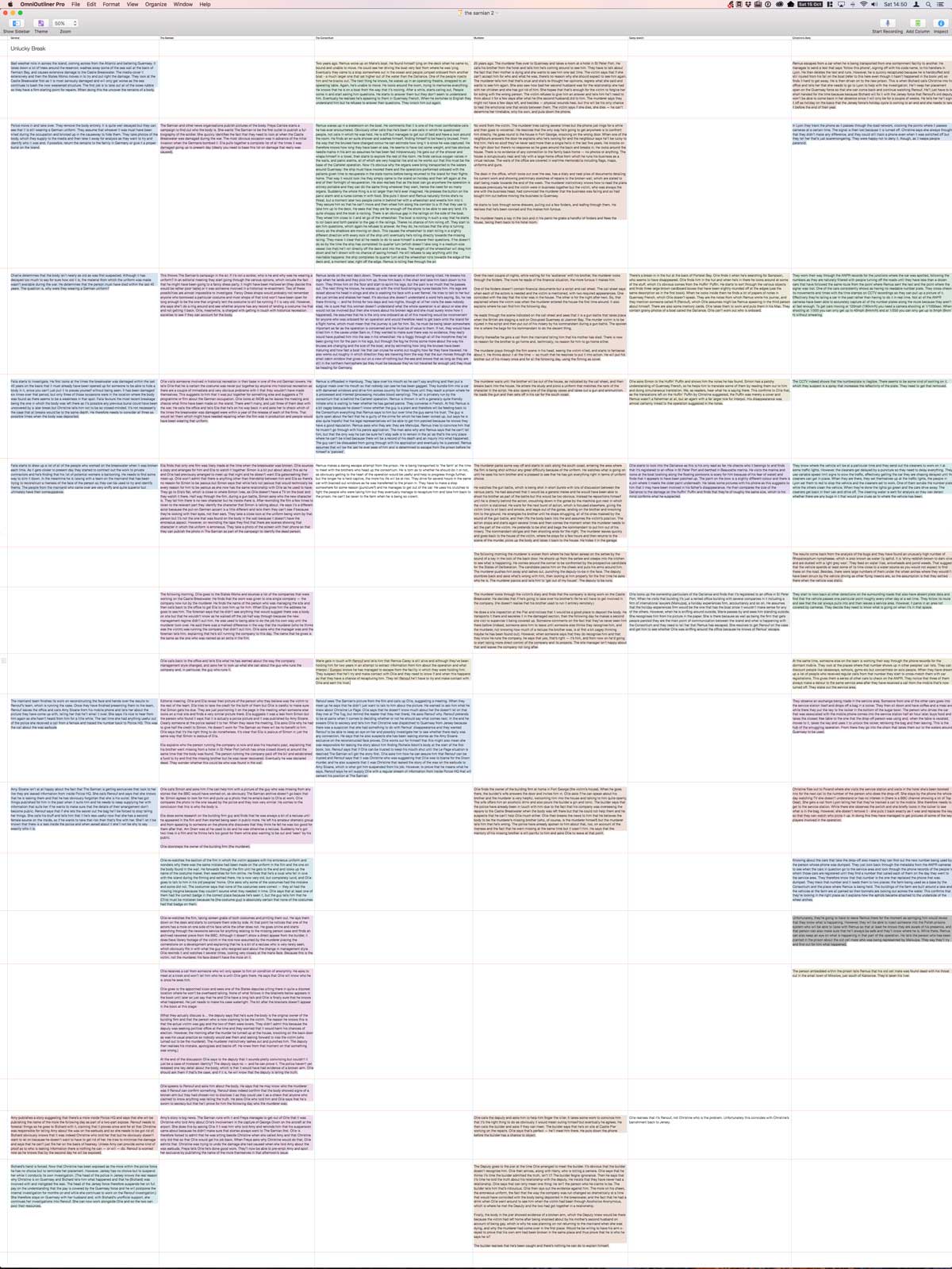Planning the Sarnian
15 October 2016
There are two types of writers, variously known as ‘planners’ and ‘pantsers’. The former — the group into which I fall — are committed to planning the whole story from beginning to end before they start writing. The latter write by the seat of their pants, effectively making it up as they go along.
Not every ‘pantser’ knows where the story will end when they sit down to write, which seems totally illogical to me. How are you supposed to guide your reader through a satisfying story arc if you don’t know where that arc is leading? How do you set up tension, gauging how it should rise and fall as the story progresses? And how do you avoid writing yourself up a blind alley that you can’t get out of without unpicking a lot of what’s come before?
Good questions, none of which I can answer, which is why I plan. And I plan and plan and plan some more.
Perhaps I over-plan, but that’s the way I work best, and it gives me enough confidence in the story to start fleshing it out.
The first novel I wrote, which isn’t part of The Sarnian series, started as a 20,000 word outline. The outline for the first volume of The Sarnian was even longer than that, and took four years to translate into the finished book.
Planning methods and tools
My planning is a bit scrappy — literally. It’s a mix of bits of paper when thoughts occur, often for books a long way off in the series; emails sent from bed when the resolution to a particularly sticky plot point finally presents itself at night; and pages and pages of scribbles in my notebook.
It all needs organising, of course, for which I use a mixture of Scapple, from Literature and Latte and OmniOutliner from the Omni Group.
Scapple is great for visualising links between different story elements, but OmniOutliner is my primary tool. It’s a professional-grade outlining application that I used to set out each thread of the book in different columns, with the events in the various threads organised as rows. That way you can see at a glance what’s happening simultaneously in each part of the outline.

The finished plan can be very big, as you can see from the image above. It’s a grab of the outline for The Sarnian book 2, Blowfish and you’ll see that I’ve also colour-coded events to make them easier to idenfity. It’s hard to gauge exactly how big it is, but for a rough idea, take a look at the menu at the very top of the screen, and you’ll see how much it’s been zoomed out.
Planning for The Sarnian book 3
I’m 90,000 words into book 3 at the time I’m writing this, and while I won’t share the outline here (zooming in might give a few clues about what’s going on), it’s been one of the most difficult to plan, largely because of what’s happening to one of the primary characters.
Although he is central to one of the major strands, there are various reasons, which again I won’t explain here, why his part of the story needs to be told third-hand, through the eyes of another character.
It means that the plan, in which the overall story arcs are fixed and each is progressing towards a single point of resolution, is undergoing more tweaking and adaptation as the story develops than was the case for the first two books in The Sarnian series.
That, on its own, has proved the value of planning thoroughly, and with software rather than on paper. It means I can see at a glance how changes to one part of the narrative might affect another, and lets me more easily manage the flow of the overall narrative to keep the story in check.
I’m hoping to have the first draft finished by Christmas.
Previous post:
The Sarnian is now available on Kindle UnlimitedNext post:
Stunning drone footage of Herm
FREE Guernsey newsletter
Don't miss our weekly update on Guernsey's fascinating history. We promise never to sell your data to anyone else, and there's a super-easy unsubscribe link on the bottom of each email so you can leave whenever you want.
The Sarnian

A body on a beach, an impossible alibi and an unstoppable race against time!
Check out the first book in The Sarnian series, set on the Channel Island of Guernsey.
